Free and plastic dance that emerged from the 19th century gymnastic and body culture was becoming greatly popular in the first decades of the 20th century, mainly among women. Differently from ballet dancers of the time, performers of plastic dance emphasized fluidity and freedom of movement. To achieve this they gave up corsets and shoes, danced barefoot, moved their arms and torsos. They also preferred the artistically valuable music of famous composers.
The aim of American Isadora Duncan, one of the pioneers of plastic dance, was to express moods and emotions via movement modeled after natural phenomena such as motions of plants and waves. Other examples followed were Ancient and Oriental art that gave dancers opportunities to express erotic impulses the society had otherwise suppressed. Rudolf von Laban, a Hungarian-born dance theoretician and choreographer, and his German student Mary Wigman aimed to liberate dance from any kind of illustrativeness. Their goal was movement born out of the internal impulses of the body, totally free dance - free from narrative, often from costumes and scenography (they danced nude in nature), not "dictated" by the music. Initially free dance was solo dance of short pieces. Only later, with the emergence of studios, was group form introduced. Solo dance became almost extinct in the Western Europe after the mid-1920s, whereas in Estonia solo dance concerts were given as late as the 1930s.
The history of Estonian plastic dance began in 1913 when Elmerice Parts started giving classes in Tartu. One of her students was Ella Ilbak, the first internationally famous Estonian dancer. In the spring of 1915 Parts gave a concert with her students in the Vanemuine Theatre - the first known Estonian-performed evening of plastic dances. World War I and the subsequent Estonian Freedom War curbed dance pursuit, but the birth of the Republic of Estonia gave a new impetus to all kinds of dance activities.
By the 1920s Germany had become a free dance Mecca due to Rudolf von Laban and Mary Wigman. Many Estonians went to study with them. Laban's best known Estonian followers were Gerd Neggo and Aino Siimola; of Wigman, Alice Jürna. All Laban and Wigman students performed in their teachers' pieces. In the 1930s, Kurt Jooss, former disciple of Laban, became another popular dance guru for Estonians. He married Estonian Aino Siimola.
Many went abroad to train themselves. Ida Urbel found a way to Laban's assistant in Berlin. Rahel Olbrei, founder of Estonian ballet, studied under Wigman in Dresden. Edith Oltorp and Nora Liina (later Kaplinski) went to London to the school directed by Jooss. Free dance's popularity was enhanced by Wigman's, Laban's, Jooss' and Raymond Duncan's concerts in Estonia.
Many dancers launched solo careers after their studies. Internationally known were Ella Ilbak, Elmerice Parts, Alice Jürna and Nora Liina. Their concerts in Estonia were rare, since here their careers as performers wouldn't have sustained them. Rudolf von Laban's followers Helmi Nurk, Ida Urjan and Aino Siimola remained in Germany after Laban's dance company disbanded: Nurk opened her own studio in Bremen, Urjan and Siimola collaborated with Kurt Jooss.
Teaching was another career path for many dancers. Gerd Neggo opened her studio in 1926 and could boast of students who later became major dance and theatre figures in Estonia, for example Ida Urbel, later artistic director of Vanemuine dance company, dance teacher and choreographer Helmi Tohvelman, Estonia Theatre dancer and later ballet master Senta Ots. Neggo's studio collaborated closely with other educational institutions and theatres. Plastic dancers gave classes in the Drama Studio Theatre School, and the national theatre school opened in 1938.
By the 1930s, plastic dance was a popular activity: dance concerts were generously attended and reviewed, dance studios offered courses at both beginner and advanced levels. The tendency to oppose ballet to free dance was disappearing. Both systems were synthesized by Rahel Olbrei, founder and artistic director of the Estonia Theatre Ballet Company. Among her dancers were Dionis Anvelt and Boris Blinov, who had studied free dance.
Even otherwise staunch ballet-minded people expanded their repertoire due to the invasion of free dance: sisters Lilian and Hermy Looring wove oriental-erotic scenes into their classical and character dance programs. The concerts of Vera Berting, who for a year had worked in the Estonia Theatre as the dance company director, contained pieces of oriental nature and of classical pantomime characters. New themes were added. In 1934 Gerd Neggo staged a dance suite based on the national epic Kalevipoeg (Kalev's Son).
In 1934, "silent era" began in Estonia - the government and media was taken over by the mildly authoritarian regime of Konstantin Päts. In September 1939 the Soviet Union forced upon Estonia a "pact of mutual assistance" that allowed the Soviet Union to bring in troops, and in June 1940, Estonia was fully occupied by its eastern neighbor. However, a year later the Nazis conquered Estonia and ruled the country until September 1944, after which the Soviet Union re-occupied Estonia.
In the autumn of 1944, around 70 000 Estonians fled to Germany and Sweden, among them Elmerice Parts, Gerd Neggo, Rahel Olbrei, Edith Oltorp, Dionis Anvelt and many others.
In the Soviet Estonia, the local culture had to resist the pressure of Russification and restrictions to creative activities. All private studios were closed down, free dance was declared a bourgeois phenomenon that had no place in the Soviet society. Only ballet could be practiced professionally. However, ballet in Estonia never lost touch with free dance ideas. But it was only after 1991, when Estonia again became independent, that free dance - now under the names of modern and contemporary dance - could be freely taken up again.
8.11.1878–21.08.1974
 Elmerice Meyer was born into the family of a manor tenant. In 1909, she married the lawyer Kaarel Parts from Tartu. She became interested in dance by chance: “In 1913, I read from some journal about movement beauty abroad. It captured my imagination so that I got on to a train and went to Berlin.” Having returned to Tartu, Elmerice Parts began to teach aesthetic gymnastics, and one of her pupils was Ella Ilbak (see below). She gave the first concerts with her students in the spring of 1915 – the first recorded public performance of free dance by Estonians.
Elmerice Meyer was born into the family of a manor tenant. In 1909, she married the lawyer Kaarel Parts from Tartu. She became interested in dance by chance: “In 1913, I read from some journal about movement beauty abroad. It captured my imagination so that I got on to a train and went to Berlin.” Having returned to Tartu, Elmerice Parts began to teach aesthetic gymnastics, and one of her pupils was Ella Ilbak (see below). She gave the first concerts with her students in the spring of 1915 – the first recorded public performance of free dance by Estonians.
 In 1919, Paul Pinna directed Oscar Wilde’s Salome, trusting Parts in the title role. After that she gave concerts in different Estonian towns. In 1921, she taught classes for the Drama Studio Theatre School, after which she went to Germany to study dance. Most of the period between 1923 and 1925 Parts spent abroad, and about the same time she began to use folk dance motifs in her programs. In 1926-1928 Elmerice Parts partnered with Hermann Oginsky (Heigo Kolt) both in Estonia and abroad. After that, at the age of almost 50, Parts ended her career as a dancer.
In 1919, Paul Pinna directed Oscar Wilde’s Salome, trusting Parts in the title role. After that she gave concerts in different Estonian towns. In 1921, she taught classes for the Drama Studio Theatre School, after which she went to Germany to study dance. Most of the period between 1923 and 1925 Parts spent abroad, and about the same time she began to use folk dance motifs in her programs. In 1926-1928 Elmerice Parts partnered with Hermann Oginsky (Heigo Kolt) both in Estonia and abroad. After that, at the age of almost 50, Parts ended her career as a dancer.
In the mid-1940s, Elmerice Parts fled to Germany, and from there in 1950 to the USA. She lived in Concord, Massachusetts until the end of her life, giving once a year independent 90-minute dance evenings. She was over 90 when making her last presentation.
9.11.1891–1.09.1974
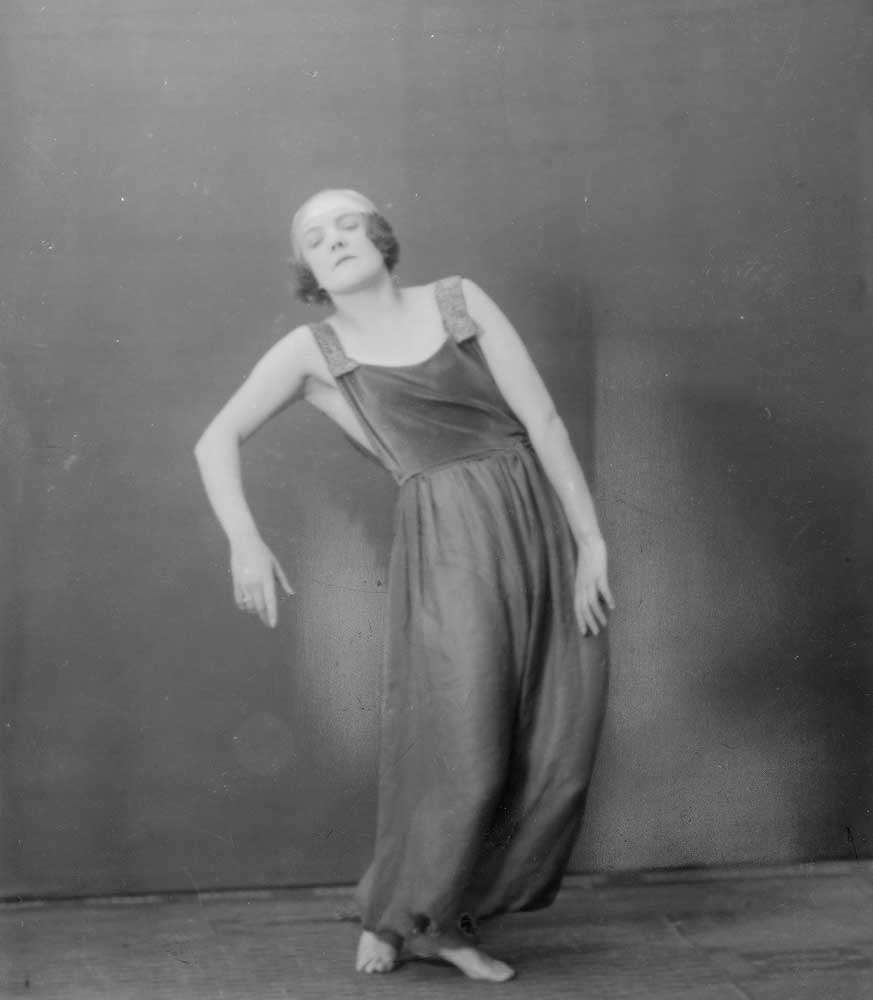 Gerd Neggo (Gerda Elwine Neggo) was born in Kuressaare and was keen on dance already as a child. However, it was in 1917 when she could start studying dance, and her first teacher was Ella Ilbak. In 1919, Neggo left for Sweden, working as a secretary in the Estonian embassy, which enabled her to live in Stockholm and study under Anna Behle, a former student of Émile Jaques-Dalcroze. It is probably Behle who told her about Rudolf von Laban, to whom Gerd Neggo went to study in 1921. She stayed with Laban for three years and performed in many of his productions, certainly in his “Rocking Temple” and “Death of Agamemnon”. When Tanzbühne Laban was disbanded in 1924, Gerd Neggo decided to return to Estonia.
Gerd Neggo (Gerda Elwine Neggo) was born in Kuressaare and was keen on dance already as a child. However, it was in 1917 when she could start studying dance, and her first teacher was Ella Ilbak. In 1919, Neggo left for Sweden, working as a secretary in the Estonian embassy, which enabled her to live in Stockholm and study under Anna Behle, a former student of Émile Jaques-Dalcroze. It is probably Behle who told her about Rudolf von Laban, to whom Gerd Neggo went to study in 1921. She stayed with Laban for three years and performed in many of his productions, certainly in his “Rocking Temple” and “Death of Agamemnon”. When Tanzbühne Laban was disbanded in 1924, Gerd Neggo decided to return to Estonia.
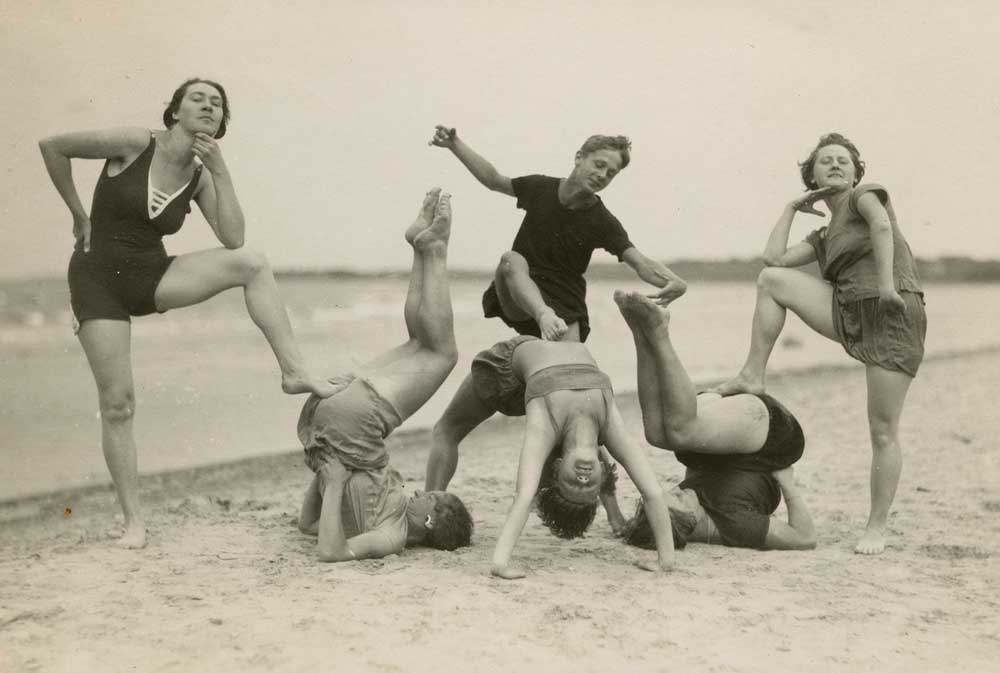 She gave her first dance classes in September 1924, and in November she danced for the first time before an Estonian audience. She opened her studio in 1926 and had a 3-4-year program, though many of her students stayed longer (e.g., Estonian actress Salme Reek). After finishing the courses, many students continued as teachers (e.g., choreographer Helmi Tohvelman), some founded their own studios (e.g., Edith Oltorp). Teachers formed the core of Neggo’s dance group. The studio gave regular student concerts with both solo and group pieces, composed by Neggo herself and her students. Gerd Neggo collaborated closely with Drama Studio Theatre (present Estonian Drama Theatre): both she herself and her students composed for and participated in many productions, because Neggo had a contract to make a dance piece at least once a year. Neggo was one of the first choreographers to use Estonian folk dances for stage compositions in the 1930s. She was also the first to make a dance production based on the national epic Kalevipoeg in 1934, using the music by Estonian composers.
She gave her first dance classes in September 1924, and in November she danced for the first time before an Estonian audience. She opened her studio in 1926 and had a 3-4-year program, though many of her students stayed longer (e.g., Estonian actress Salme Reek). After finishing the courses, many students continued as teachers (e.g., choreographer Helmi Tohvelman), some founded their own studios (e.g., Edith Oltorp). Teachers formed the core of Neggo’s dance group. The studio gave regular student concerts with both solo and group pieces, composed by Neggo herself and her students. Gerd Neggo collaborated closely with Drama Studio Theatre (present Estonian Drama Theatre): both she herself and her students composed for and participated in many productions, because Neggo had a contract to make a dance piece at least once a year. Neggo was one of the first choreographers to use Estonian folk dances for stage compositions in the 1930s. She was also the first to make a dance production based on the national epic Kalevipoeg in 1934, using the music by Estonian composers.
The Gerd Neggo Studio, which for 15 years had offered systematic and continuous dance studies, discontinued its activities in 1940. In 1944, she and her husband Paul Olak fled to Sweden.
18.04.1901–5.02.1971
Aino Siimola (Leberecht) was born at Siimu farm in Järvamaa. Before World War I, the family moved to a village close to St.Petersburg, where Siimola took ballet classes twice a week and later attended Klaudia Issachenko’s plastic dance studio. In 1919, the Leberechts moved back to Estonia, near Tartu. Siimola took classes by Ella Ilbak. In 1922, she went to Germany to study under Laban. Aino Siimola participated in many of Laban’s productions until 1924, when Laban’s Tanzbühne was disbanded. She then joined a dance company run by Sigurd Leeder and Kurt Jooss, participating in in Jooss’s Brautfahrt, and Der grüne Tisch. In 1933, Jooss fled the Nazi regime to England, and with him went Aino Siimola, then Jooss’s spouse and assistant. In 1949, Jooss moved back to Germany with his family. In the 1950s, Siimola was Jooss’s assistant at the Düsseldorf Opera. Aino Siimola had two daughters: Anna (1931) and Christina (1942).
23.03.1902– ?
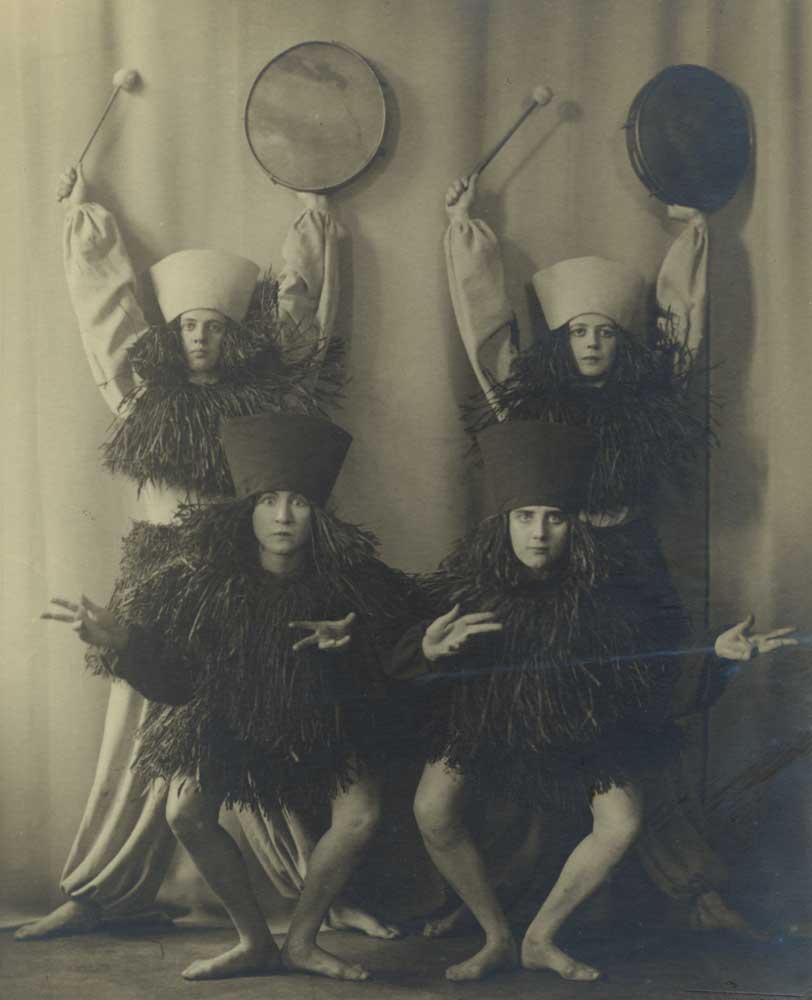 Alice Jürna was born in Tallinn but obtained her dance education with Mary Wigman in Dresden, and performed in 1924-25 in Wigman’s productions Szenen aus einem Tanzdrama, Bann and Ein Tanzmärchen. In 1925-26, Alice Jürna worked in a theatre in Gera under Wigman’s disciple Yvonne Georgi. Then Jürna launched a solo career, and in February 1927 gave concerts in Estonia. The latest data about Jürna is from 1947, when she danced in Memmingen and Berlin. About her private life it is known that in 1927 she was engaged to Oskar Klohn, who died in 1938; they had a son.
Alice Jürna was born in Tallinn but obtained her dance education with Mary Wigman in Dresden, and performed in 1924-25 in Wigman’s productions Szenen aus einem Tanzdrama, Bann and Ein Tanzmärchen. In 1925-26, Alice Jürna worked in a theatre in Gera under Wigman’s disciple Yvonne Georgi. Then Jürna launched a solo career, and in February 1927 gave concerts in Estonia. The latest data about Jürna is from 1947, when she danced in Memmingen and Berlin. About her private life it is known that in 1927 she was engaged to Oskar Klohn, who died in 1938; they had a son.
11.03.1906–22.05.1982
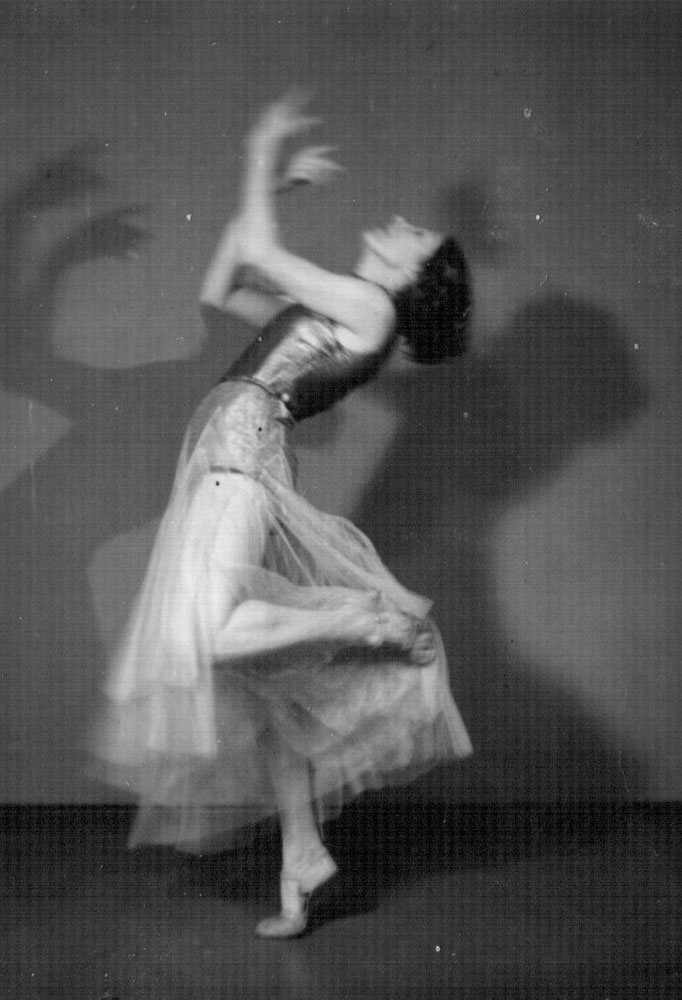 Nora Raudsepp was born in Võru but was educated in Tartu. She began her dance studies at Gerd Neggo’s studio, then went to Paris, where she studied ballet under Nicholas Legat, former premier dancer at the Mariinski Theatre, followed by studies in Essen Folkwang Schule established by Kurt Jooss and Sigurd Leeder. In 1932, Nora Liina was briefly in Estonia, but then went again to Paris. She gave dance concerts in different French cities, then in Tartu and Tallinn. In 1938, Nora Raudsepp married Dr. Jerzy Kaplinski, Tartu University lecturer of Polish language and literature. Their son Jaan, who became poet, was born in 1941. After that, Nora Kaplinski gave up dancing and became an esteemed translator and lecturer of French language in Tartu Univeristy.
Nora Raudsepp was born in Võru but was educated in Tartu. She began her dance studies at Gerd Neggo’s studio, then went to Paris, where she studied ballet under Nicholas Legat, former premier dancer at the Mariinski Theatre, followed by studies in Essen Folkwang Schule established by Kurt Jooss and Sigurd Leeder. In 1932, Nora Liina was briefly in Estonia, but then went again to Paris. She gave dance concerts in different French cities, then in Tartu and Tallinn. In 1938, Nora Raudsepp married Dr. Jerzy Kaplinski, Tartu University lecturer of Polish language and literature. Their son Jaan, who became poet, was born in 1941. After that, Nora Kaplinski gave up dancing and became an esteemed translator and lecturer of French language in Tartu Univeristy.
Ida Urjan was born in Tartu. She became Laban’s student in 1922 and took part in his productions until Laban disbanded the Tanzbühne in May 1924. After that, she worked as an assistant to Laban’s former student Albrecht Knust. Thereafter Urjan joined Kurt Jooss’s Neue Tanzbühne Münster. Her collaboration with Jooss continued in Essen, where Joss founded his Folkwangschule and Theatre. Nothing is known of Ida Urjan’s later life.
20.03.1900–21.06.1996
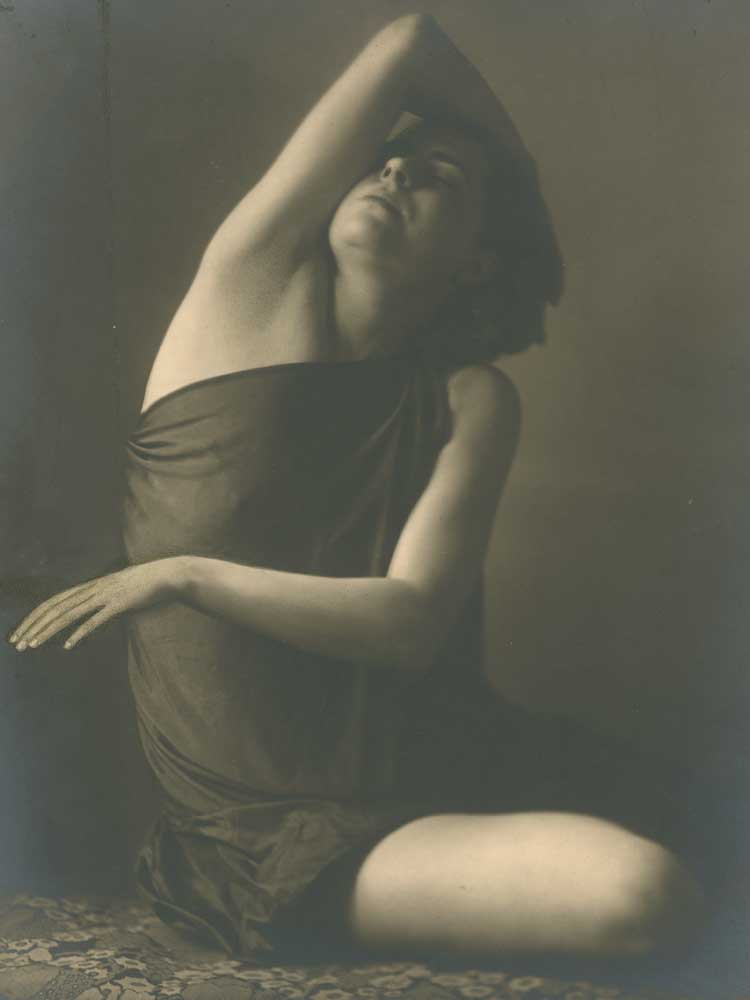 Helmi Nurk was born in Tallinn. She began her dance studies with Laban in the summer of 1922 and performed in Laban’s Tanzbühne until it was disbanded in 1924. Helmi Nurk then moved to Bremen, where she taught and performed. In 1928, she married Croatian Dragutin Aleksander in Zagreb. When the Nazis occupied Croatia, Nurk and her Jewish-origin husband fled to Italy, and in 1948 they emigrated to South Africa. Helmi and Dragutin had two daughters: Ksenija Feodora and Nina Ivana. Helmi Aleksander died in Johannesburg, South Africa.
Helmi Nurk was born in Tallinn. She began her dance studies with Laban in the summer of 1922 and performed in Laban’s Tanzbühne until it was disbanded in 1924. Helmi Nurk then moved to Bremen, where she taught and performed. In 1928, she married Croatian Dragutin Aleksander in Zagreb. When the Nazis occupied Croatia, Nurk and her Jewish-origin husband fled to Italy, and in 1948 they emigrated to South Africa. Helmi and Dragutin had two daughters: Ksenija Feodora and Nina Ivana. Helmi Aleksander died in Johannesburg, South Africa.
1902–1980
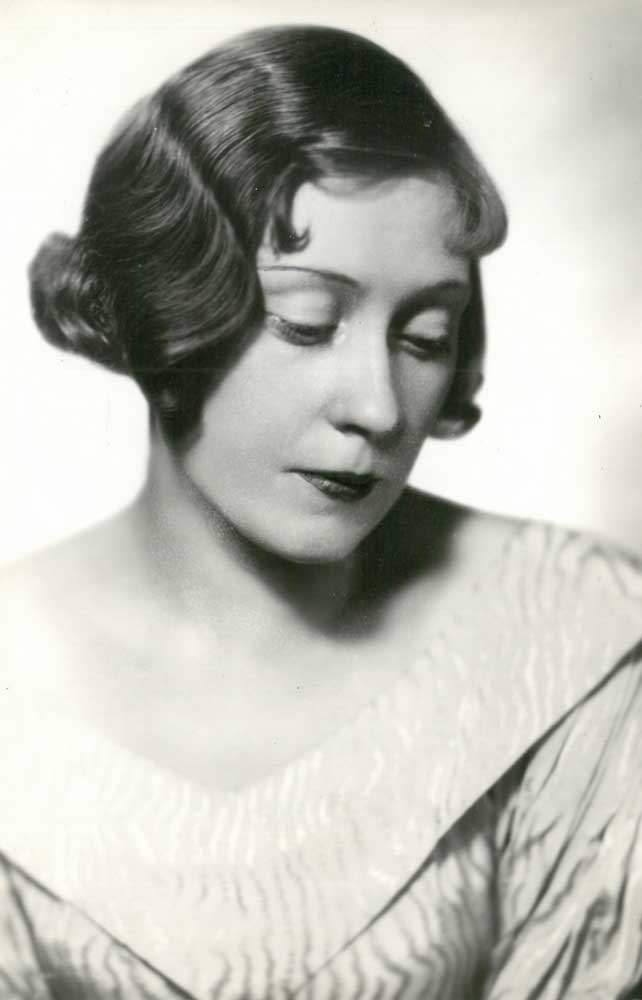 Edith Johanna Oltorp was born in Tallinn and obtained her dance education in Gerd Neggo’s studio. She also performed in the studio’s productions. Oltorp attracted attention with interpretations of Bach, Skriabin, and Ravel, with dominating moods of sadness and religious piety. In the late 1920s and early 1930s, she gave classes to the Drama Studio students. In 1930, she studied in Paris; after returning to Estonia, she worked in Tartu briefly as a teacher of rhythmic gymnastics. From autumn 1932, she ran a dance and gymnastics studio in Tallinn. In 1938, Oltorp studied under Jooss in England, and after returning to Estonia gave concerts in Tartu and Tallinn. In 1945, she fled first to Germany and then to Canada, where she worked as a gymnastics teacher
Edith Johanna Oltorp was born in Tallinn and obtained her dance education in Gerd Neggo’s studio. She also performed in the studio’s productions. Oltorp attracted attention with interpretations of Bach, Skriabin, and Ravel, with dominating moods of sadness and religious piety. In the late 1920s and early 1930s, she gave classes to the Drama Studio students. In 1930, she studied in Paris; after returning to Estonia, she worked in Tartu briefly as a teacher of rhythmic gymnastics. From autumn 1932, she ran a dance and gymnastics studio in Tallinn. In 1938, Oltorp studied under Jooss in England, and after returning to Estonia gave concerts in Tartu and Tallinn. In 1945, she fled first to Germany and then to Canada, where she worked as a gymnastics teacher
19.02.1874–12.10.1964
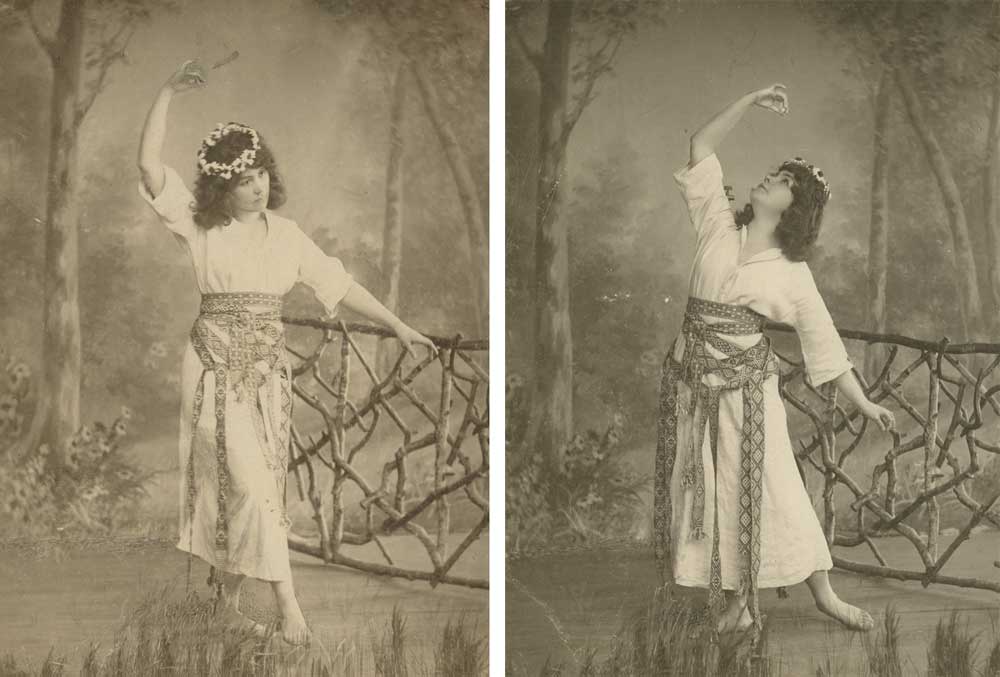 Agathe Hermann was born in Tallinn. In 1893, she obtained a private teacher’s diploma. She studied music under composer Konstantin Türnpu, later she studied in Berlin and St. Petersburg. Hermann studied plastic and character dance under Mariinsky ballet master Alfred Bekefy and ballet dancer Fremont. Before total dedication to music, Agathe Hermann performed as Inessa Olberianini in Tallinn and was one of the first supporters of free dance. She was later a singing teacher in Lender Gymnasium and French Lyceum. She was married to accountant Karl August Margens who died in 1919 in Tallinn.
Agathe Hermann was born in Tallinn. In 1893, she obtained a private teacher’s diploma. She studied music under composer Konstantin Türnpu, later she studied in Berlin and St. Petersburg. Hermann studied plastic and character dance under Mariinsky ballet master Alfred Bekefy and ballet dancer Fremont. Before total dedication to music, Agathe Hermann performed as Inessa Olberianini in Tallinn and was one of the first supporters of free dance. She was later a singing teacher in Lender Gymnasium and French Lyceum. She was married to accountant Karl August Margens who died in 1919 in Tallinn.
12.11.1895–08.08.1997
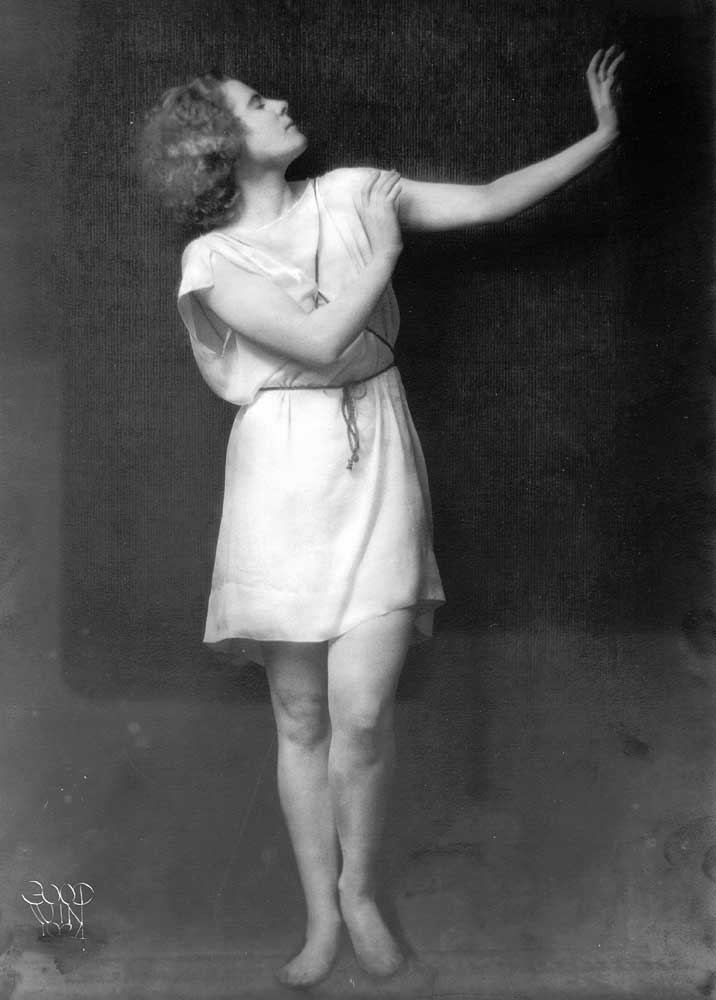 Ella Ilbak was born in Viljandi County and obtained general education in Tartu Gymnasium for Young Women. Finnish-Swedish dancer Maggie Gripenberg, who gave concerts in Tartu in 1913, sparked her interest in dance. She studied first under Elmerice Parts in Tartu, then in St.Petersburg under Claudia Issatchenko and Sergei Volkonski, in Paris under Maria Rutkowska and Raymond Duncan. She gave her first independent dance concerts in 1918-19 in Tartu and Tallinn. Since 1921, she mainly performed in Western Europe, staying longer in Budapest, Munich, Riga, and Paris. She lived in the USA from 1955 until her death.
Ella Ilbak was born in Viljandi County and obtained general education in Tartu Gymnasium for Young Women. Finnish-Swedish dancer Maggie Gripenberg, who gave concerts in Tartu in 1913, sparked her interest in dance. She studied first under Elmerice Parts in Tartu, then in St.Petersburg under Claudia Issatchenko and Sergei Volkonski, in Paris under Maria Rutkowska and Raymond Duncan. She gave her first independent dance concerts in 1918-19 in Tartu and Tallinn. Since 1921, she mainly performed in Western Europe, staying longer in Budapest, Munich, Riga, and Paris. She lived in the USA from 1955 until her death.
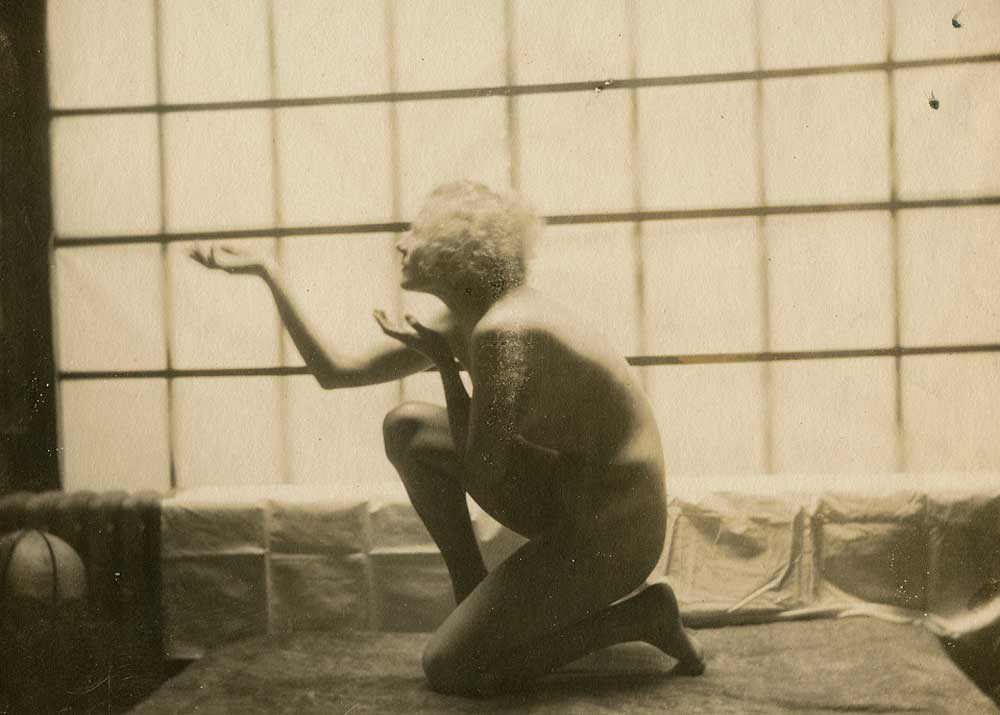 Her free dance compositions to the music of Debussy, Skriabin, J.S. Bach, Chopin, Wagner, and others (“Flame”, “Capricious”, “Prayer”, “Vision”, “Page”) inspired many young people: Ida Urbel, later the Vanemuine Theatre dance company director, said that Ilbak “charmed me with her femininity, her fluid movements, dancing from inside out.” Rahel Olbrei, founder of Estonian ballet, wrote to Ilbak years later “I have learned much from you, since your dances contained much of what was lacking in ballet.”
Her free dance compositions to the music of Debussy, Skriabin, J.S. Bach, Chopin, Wagner, and others (“Flame”, “Capricious”, “Prayer”, “Vision”, “Page”) inspired many young people: Ida Urbel, later the Vanemuine Theatre dance company director, said that Ilbak “charmed me with her femininity, her fluid movements, dancing from inside out.” Rahel Olbrei, founder of Estonian ballet, wrote to Ilbak years later “I have learned much from you, since your dances contained much of what was lacking in ballet.”
3.10.1911–2.10.1998
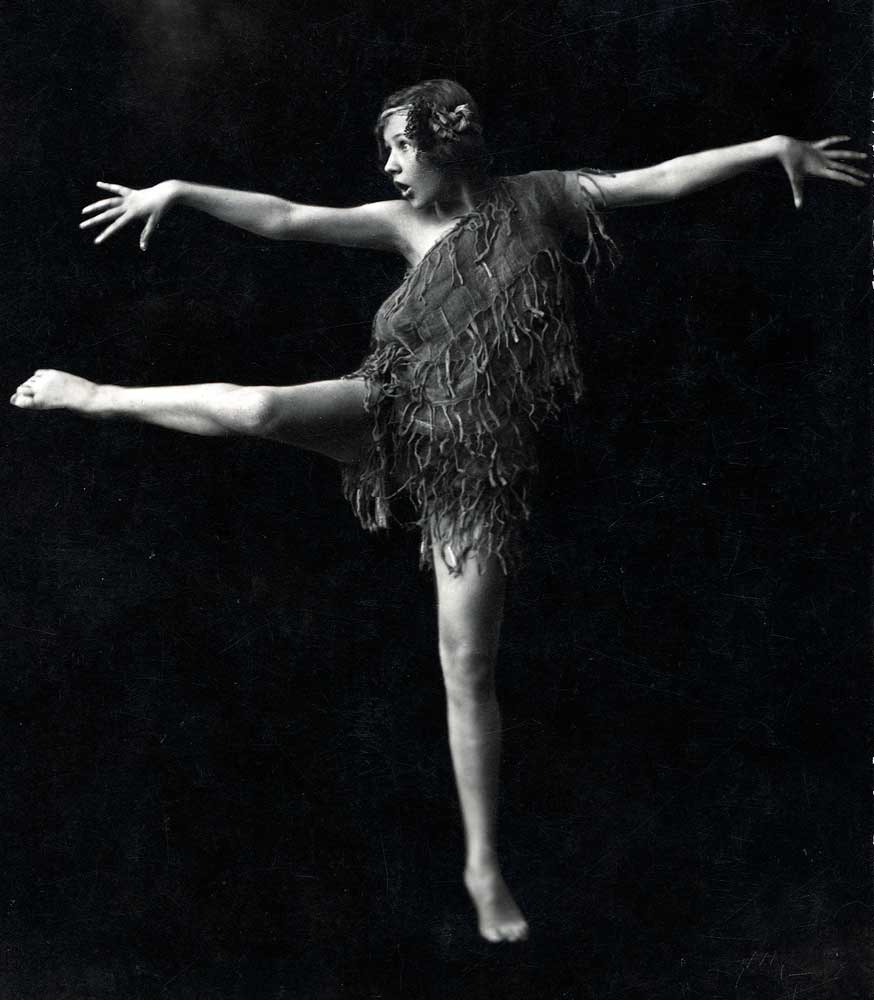 Beatrice Tobias was born in Berlin, where her parents had moved in 1910. The girl’s dance talent was visible early on – she danced on stage already at the age of six. After the death of her father, composer Rudolf Tobias in 1918, his widow Louise moved back to Estonia with her five children. To help the family economically, Beatrice Tobias gave plastic dance concerts. She was the first dancer to use the music of Estonian composers for her compositions. Late in 1923, the young dancer moved abroad. In 1926, she was a member of Berlin State Opera ballet company, with whom she went on tour to the USA, where she decided to stay. Since Beatrice Tobias had also a talent for drawing, she was admitted to New York School of Art and she became a reknown illustrator whose work was published in many newspapers and journals. She was an illustrator for The New Yorker in 1935-1950, and for many books. She died in New York, but her remains were brought to Estonia and she is buried next to her father in Kullamaa, Estonia.
Beatrice Tobias was born in Berlin, where her parents had moved in 1910. The girl’s dance talent was visible early on – she danced on stage already at the age of six. After the death of her father, composer Rudolf Tobias in 1918, his widow Louise moved back to Estonia with her five children. To help the family economically, Beatrice Tobias gave plastic dance concerts. She was the first dancer to use the music of Estonian composers for her compositions. Late in 1923, the young dancer moved abroad. In 1926, she was a member of Berlin State Opera ballet company, with whom she went on tour to the USA, where she decided to stay. Since Beatrice Tobias had also a talent for drawing, she was admitted to New York School of Art and she became a reknown illustrator whose work was published in many newspapers and journals. She was an illustrator for The New Yorker in 1935-1950, and for many books. She died in New York, but her remains were brought to Estonia and she is buried next to her father in Kullamaa, Estonia.
1.02.1895–9.11.1947
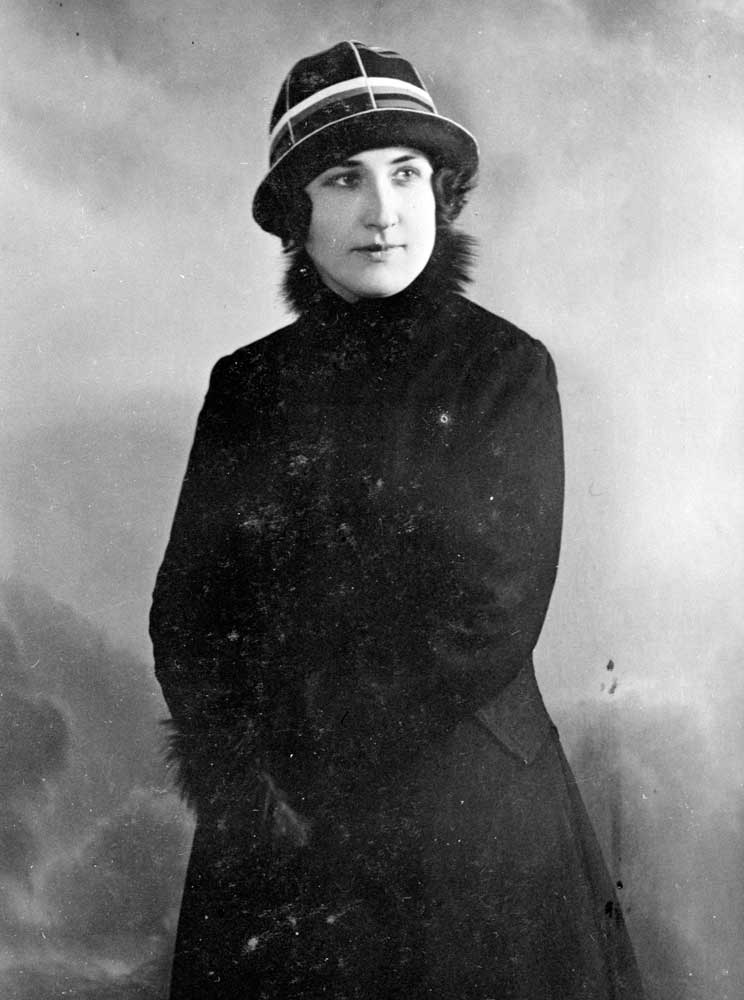 Tiina Kapper was born in St. Petersburg, where she studied dance under ballet dancer Lavrenti Novikov; later she learned plastic dance and eurhythmics in Vienna. In 1919, she founded a dance studio in Tartu, which lasted until 1940. Her students included Velda Otsus, Ella Lukk-Kudu, Elfriede Saarik-Tubin, and Udo Väljaots, who became the core of the Vanemuine Theatre dance company, founded in 1935. In the 1920s, Tiina Kapper participated as a dance soloist in Vanemuine Theatre operetta productions and in 1924–1934 composed dances for musical and children productions.
Tiina Kapper was born in St. Petersburg, where she studied dance under ballet dancer Lavrenti Novikov; later she learned plastic dance and eurhythmics in Vienna. In 1919, she founded a dance studio in Tartu, which lasted until 1940. Her students included Velda Otsus, Ella Lukk-Kudu, Elfriede Saarik-Tubin, and Udo Väljaots, who became the core of the Vanemuine Theatre dance company, founded in 1935. In the 1920s, Tiina Kapper participated as a dance soloist in Vanemuine Theatre operetta productions and in 1924–1934 composed dances for musical and children productions.
16.12.1900–4.10.1983
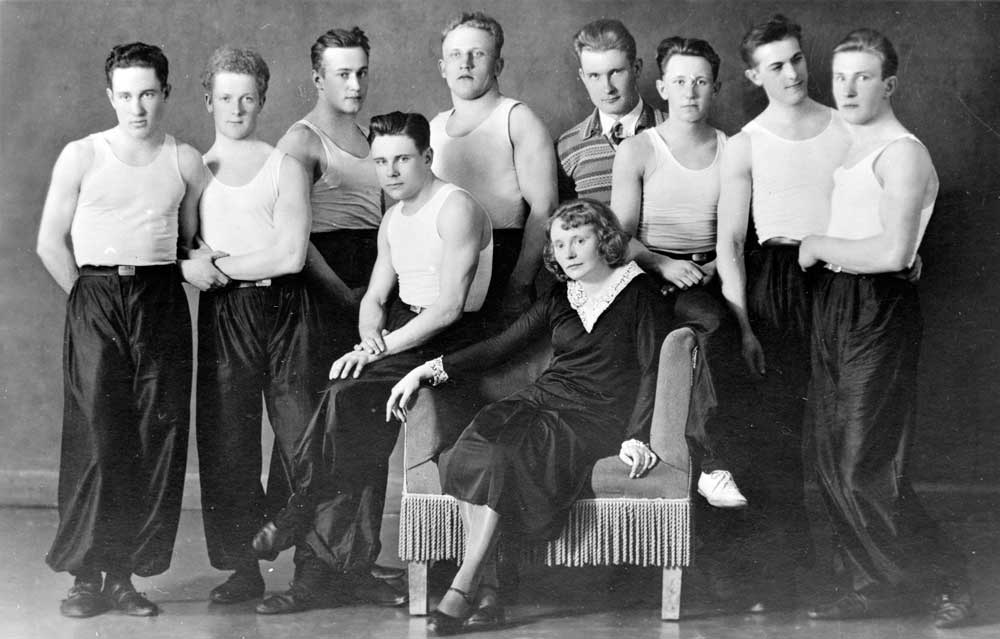 Ida Urbel was born and raised in Viljandi. She studied dance in Gerd Neggo’s studio, later in Riga and Paris – obtaining a diploma of ballet master and dance teacher from the latter in 1932. In 1921, she founded her own studio in Viljandi, composed dances for Ugala Theatre productions and was there a dance group director in 1929–1935, and a guest choreographer in the Pärnu Endla Theatre. She worked in 1935–1980 in the Vanemuine Theatre (in 1957–1974 as the artistic director of the dance company), and founded a permanent dance company and studio in Vanemuine. In her productions, she aimed for a synthesis of ballet and free dance.
Ida Urbel was born and raised in Viljandi. She studied dance in Gerd Neggo’s studio, later in Riga and Paris – obtaining a diploma of ballet master and dance teacher from the latter in 1932. In 1921, she founded her own studio in Viljandi, composed dances for Ugala Theatre productions and was there a dance group director in 1929–1935, and a guest choreographer in the Pärnu Endla Theatre. She worked in 1935–1980 in the Vanemuine Theatre (in 1957–1974 as the artistic director of the dance company), and founded a permanent dance company and studio in Vanemuine. In her productions, she aimed for a synthesis of ballet and free dance.
13.10.1900–21.10.1983
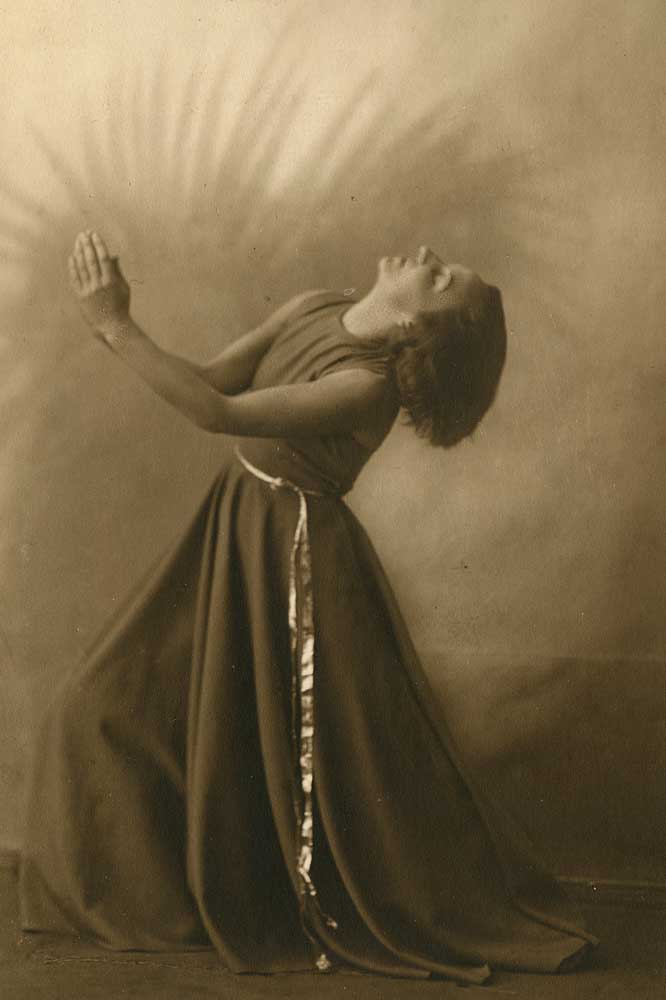 Helmi Tohvelman was born in Järva County. She studied dance in the Gerd Neggo studio and in 1937 in Berlin under Eugenia Eduardova and in Dresden under Mary Wigman. In 1931–1944, she was a movement director and dancer in the Tallinn Worker’s Theatre, and the head of the theatre’s dance studio. In 1944–1948, she was movement director and teacher in the Youth Theatre and its studio. Helmi Tohvelman taught movement basics to generations of Estonian actors, first in the Drama Studio (1944-1946), then in Estonian State Theatre Institute (1946-1951), and in 1957–1981 in the Theatre School. She has choreographed and composed movement in Estonian theatres, and directed amateur dance groups. Thanks to Helmi Tohvelman and Ida Urbel the mentality of free dance was kept alive during the Soviet period.
Helmi Tohvelman was born in Järva County. She studied dance in the Gerd Neggo studio and in 1937 in Berlin under Eugenia Eduardova and in Dresden under Mary Wigman. In 1931–1944, she was a movement director and dancer in the Tallinn Worker’s Theatre, and the head of the theatre’s dance studio. In 1944–1948, she was movement director and teacher in the Youth Theatre and its studio. Helmi Tohvelman taught movement basics to generations of Estonian actors, first in the Drama Studio (1944-1946), then in Estonian State Theatre Institute (1946-1951), and in 1957–1981 in the Theatre School. She has choreographed and composed movement in Estonian theatres, and directed amateur dance groups. Thanks to Helmi Tohvelman and Ida Urbel the mentality of free dance was kept alive during the Soviet period.
Free dance impact on ballet
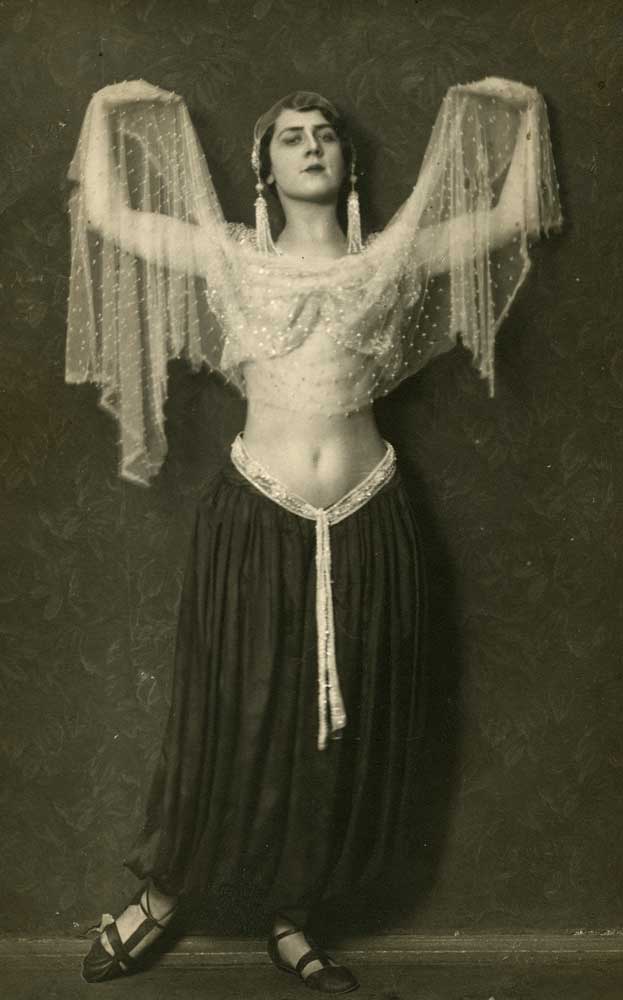 It is unknown when or where Veera Berting was born. She studied in the Moscow ballet school and then plastic dance under different teachers in Western Europe. She came to Estonia due to World War I and in the spring of 1919, she became the Estonia Theatre dance director in the place of Sessy Smironina-Sevun, who left for Western Europe. In November 1919, she organized a dance concert of free dances in which she and Estonia Theatre dance company members Lilian Looring, Hilda Gleser, Robert Rood and Emmy Holz took part. Veera Berting had her own studio in 1919-1920. In addition to Rood, Looring, and Holz, we can find among its students also Tiina Kapper, a future Vanemuine theatre dance director. In 1920, Berting toured in different Estonian towns, and Helsinki. She also taught dance in the Paul Sepp Theatre Studio. In 1921, she went abroad and never returned. She died supposedly in the early 1930s of tuberculosis.
It is unknown when or where Veera Berting was born. She studied in the Moscow ballet school and then plastic dance under different teachers in Western Europe. She came to Estonia due to World War I and in the spring of 1919, she became the Estonia Theatre dance director in the place of Sessy Smironina-Sevun, who left for Western Europe. In November 1919, she organized a dance concert of free dances in which she and Estonia Theatre dance company members Lilian Looring, Hilda Gleser, Robert Rood and Emmy Holz took part. Veera Berting had her own studio in 1919-1920. In addition to Rood, Looring, and Holz, we can find among its students also Tiina Kapper, a future Vanemuine theatre dance director. In 1920, Berting toured in different Estonian towns, and Helsinki. She also taught dance in the Paul Sepp Theatre Studio. In 1921, she went abroad and never returned. She died supposedly in the early 1930s of tuberculosis.
15.09.1899–2.05.1963
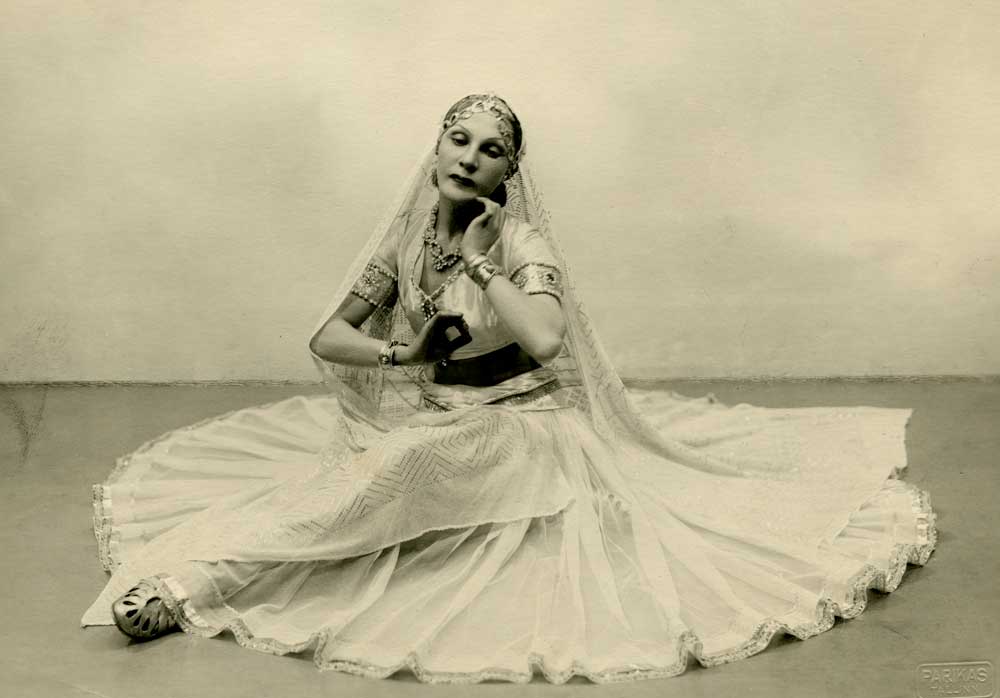 Lilian Looring was born in Tallinn, where she also grew up. She first studied under Sessy Smironina-Sevun, and after that under Eugenia Litvinova, later also in Paris under St Petersburg former ballerina Olga Preobrajenska. She was a dance soloist at the Estonia Theatre in 1918-1927 (with breaks) and the first Estonian classical ballerina. In 1926-31, she toured in Western Europe with solos and duos together with her sister Hermy, Robert Rood, and Herman Kolt-Oginsky. She had her own studio in Tallinn until 1940, was sent to Siberia by the Soviets in 1941 and stayed there until 1955. After her return, she taught ballet for amateur groups.
Lilian Looring was born in Tallinn, where she also grew up. She first studied under Sessy Smironina-Sevun, and after that under Eugenia Litvinova, later also in Paris under St Petersburg former ballerina Olga Preobrajenska. She was a dance soloist at the Estonia Theatre in 1918-1927 (with breaks) and the first Estonian classical ballerina. In 1926-31, she toured in Western Europe with solos and duos together with her sister Hermy, Robert Rood, and Herman Kolt-Oginsky. She had her own studio in Tallinn until 1940, was sent to Siberia by the Soviets in 1941 and stayed there until 1955. After her return, she taught ballet for amateur groups.
23.10.1902–4.11.1923
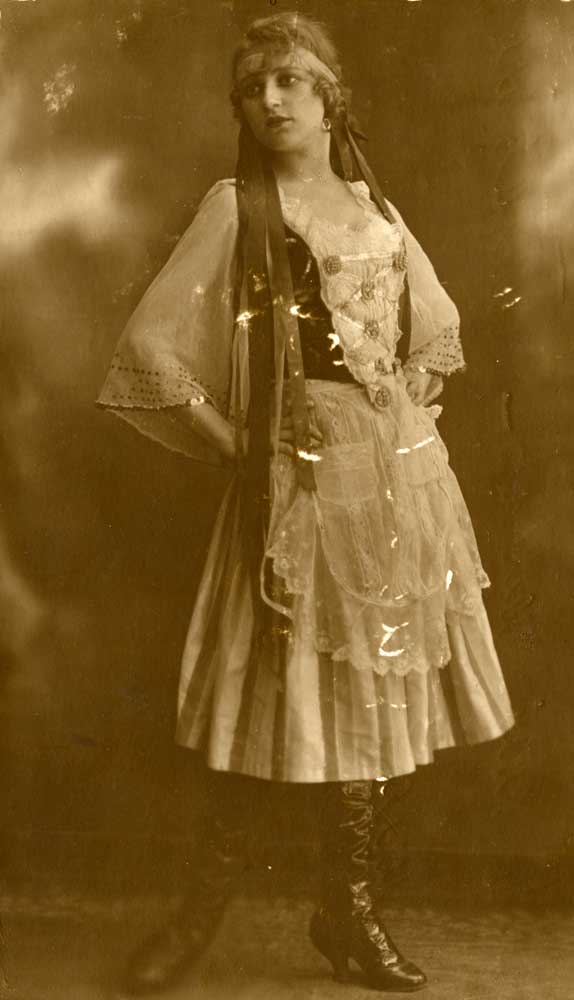 Emmy Holz was born in Tallinn, and like Looring, obtained her dance education under Sessy Smironina-Sevun and Eugenia Litvinova. She was a member of the Estonia Theatre dance company in 1918–1923. She moved to Spain via Brussels and Paris, and was supposedly killed by her partner there.
Emmy Holz was born in Tallinn, and like Looring, obtained her dance education under Sessy Smironina-Sevun and Eugenia Litvinova. She was a member of the Estonia Theatre dance company in 1918–1923. She moved to Spain via Brussels and Paris, and was supposedly killed by her partner there.
1.08.1898–12.12.1984
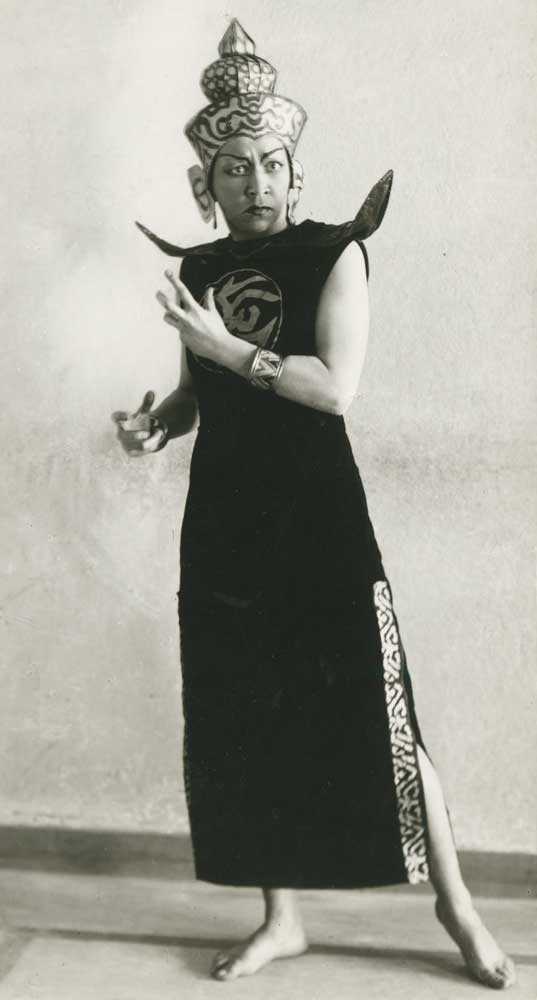 Rahel Olbrei, founder of the Estonian ballet tradition, was born in Tallinn, where she grew up as well. She studied ballet together with Looring and Holz under Sessy Smironina-Sevun and Eugenia Litvinova, but growing dissatisfied with ballet, she went to Germany to study under Mary Wigman, and later also under Laban. The influences of free dance can be seen in her first full-length dance piece, The Green Flute (1928). Later she studied character dance under Eugenia Eduardova in Paris. She was a dancer in the Estonia Theatre dance company from 1918, and its artistic director in 1925–1944. She founded a studio for the theatre and established a tradition of dance acting. Her dance scenes in operas and operettas were like mini productions that always attracted spectators and critical attention. In 1944, she fled together with her husband Hanno Kompus to Sweden and took part in the activities of Estonian Theatre in Exile. In 1951, she moved to Canada where she died.
Rahel Olbrei, founder of the Estonian ballet tradition, was born in Tallinn, where she grew up as well. She studied ballet together with Looring and Holz under Sessy Smironina-Sevun and Eugenia Litvinova, but growing dissatisfied with ballet, she went to Germany to study under Mary Wigman, and later also under Laban. The influences of free dance can be seen in her first full-length dance piece, The Green Flute (1928). Later she studied character dance under Eugenia Eduardova in Paris. She was a dancer in the Estonia Theatre dance company from 1918, and its artistic director in 1925–1944. She founded a studio for the theatre and established a tradition of dance acting. Her dance scenes in operas and operettas were like mini productions that always attracted spectators and critical attention. In 1944, she fled together with her husband Hanno Kompus to Sweden and took part in the activities of Estonian Theatre in Exile. In 1951, she moved to Canada where she died.